Some of the best village ramparts in France
It was a good night and not as cold as it has been. The forecast suggests that we are in for a warm spell after rain later today. We serviced Bertie and said our goodbyes to our new friends Alice and Joe (http://www.artandfreedom.co.uk/) who were in the only other van in the aire last night. This must be a record – 100% British occupancy! We had a good chat to them and we very much hope to see them again later on as we are both heading south for the winter.
The plan today was to bumble down in to the Ebro valley, do some shopping and then follow the river down to our overnight stop in the Ebro delta. I had visions of a gentle drive through a few riverside towns with wide views and basically fairly flat land. This is indeed how it started for the first few miles after we joined the river at Mora d’Ebre. However in a few miles the road was starting to climb and swung away from the river. It climbed and climbed and then curved sharply to the left and we could see the Ebro way down below us! The Ebro cuts through the steep Sierra Cardo mountains here on its way to the sea. At 580 miles long the Ebro is one Europe’s major rivers and I was excited to see it. Unlike all the other rivers we have crossed in Spain this one is full of water and all of it is in a hurry to get to the sea.
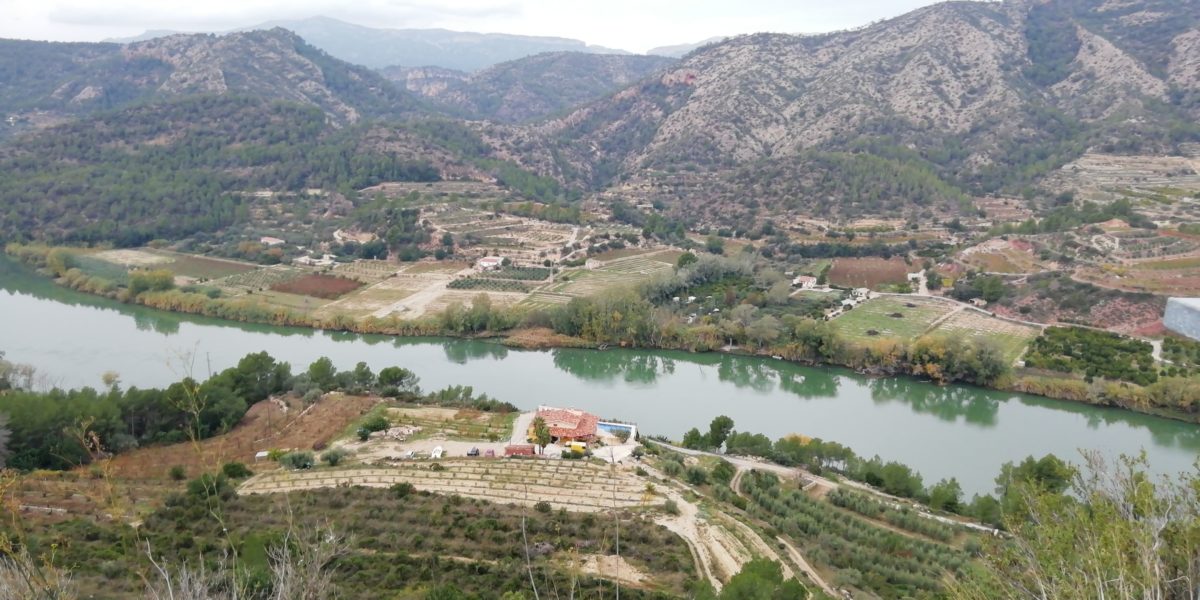
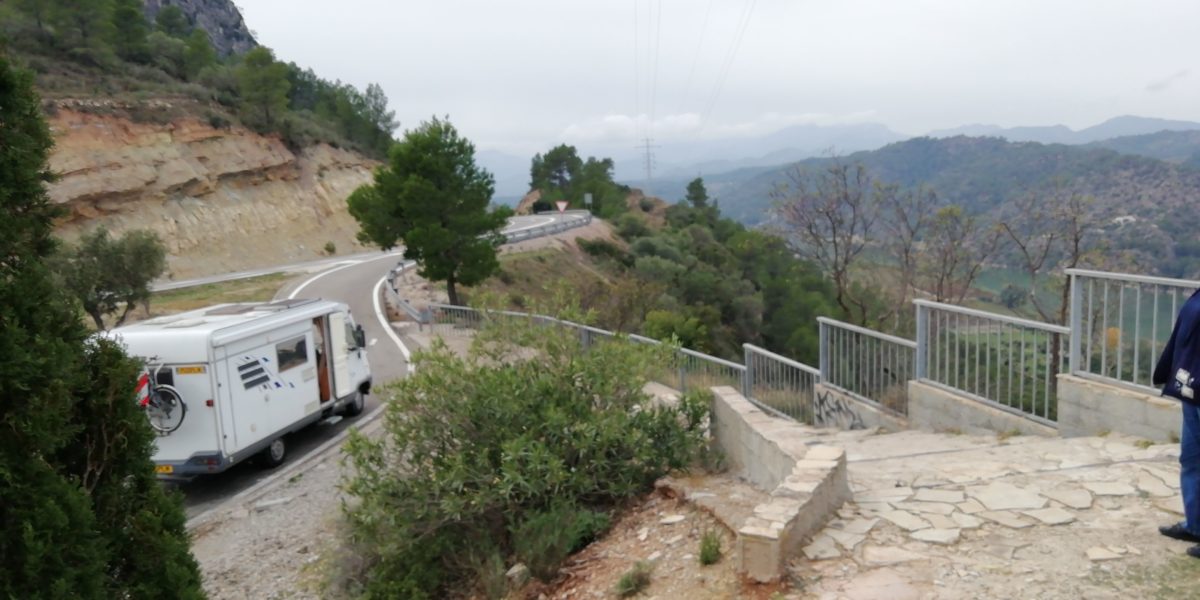
After a stop for coffee and photos at the viewpoint I checked the route carefully. There were two choices; stay on this main road with its heavy lorries that were all in a hurry or turn off at the next village and follow the “road less travelled” down the north bank. Of course I chose this last option – slow and wiggly is much more fun than fast and busy. There was a good reason why the main road crossed over the Ebro and that was that there was not room for a road on our side! So we climbed precipitously up the valley sides and detoured around the equally vertiginous side valleys (well side gorges really). The road was quiet and in the 20 miles we probably saw less than a dozen vehicles. It was also beautifully smooth and well provided with crash barriers. All this meant that Bertie could bumble along at between 20 and 30kph which he really likes. One drawback of minor roads is there are virtually no laybys or viewpoints. These roads are for local people to get to where they need to go – they are not there for tourists enjoying the breathtaking views. In all that road I only found one place to pull in. There was not even a shadow of a pull in at the top of the pass – not even a sign to tell us how high we were but I am guessing it was quite high as it was a long drop down in to the village of Tivenys.
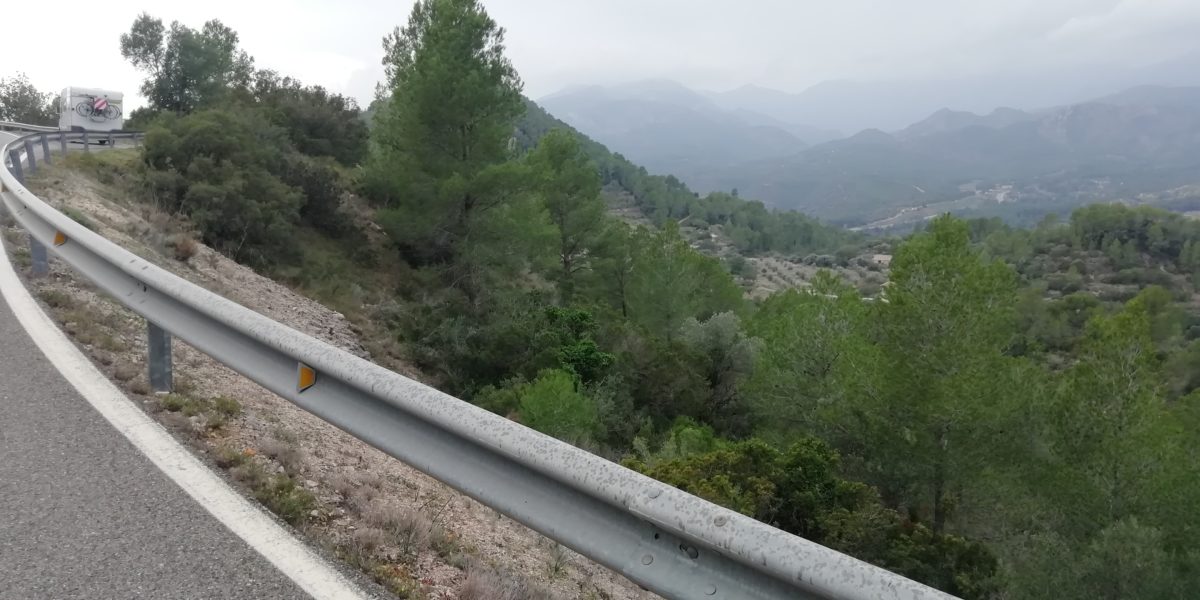
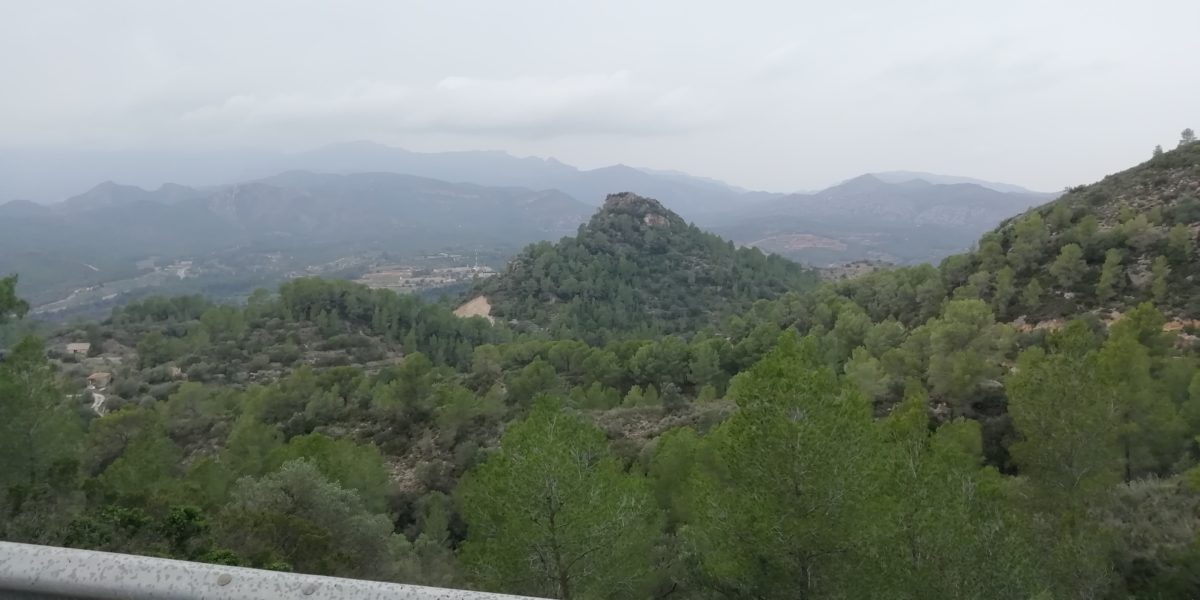
Once we were back down by the river it was another change – now we were driving through orange groves with thousands of trees, many right beside the road and so laden with fruit that many trees had a carpet of windfalls around them! It seems this area is irrigated by the Ebro and for some miles we followed an irrigation canal. I noticed that all the trees were connected by black hosepipes on the ground that I guess are for watering the trees.
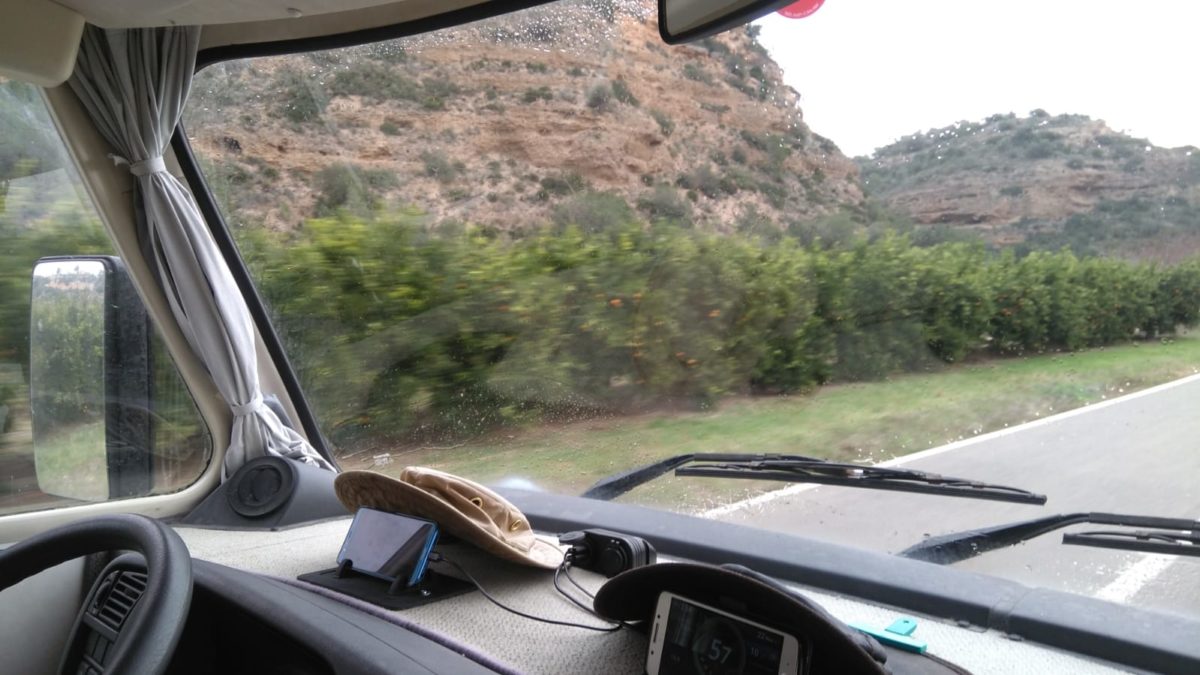
Tortosa was a much bigger city than I had expected. The town is dominated by a huge castle and other ramparts some of which date back to the Arab (Moorish) occupation in the Middle Ages. The scenery changed yet again after Tortosa as we left the Sierra Cardo mountains and we are now back on the coastal plain, home of the E15 motorway and the main railway line etc. Also lots of industry which has the space and transport connections it needs.
We crossed all this less delightful stuff and after bypassing Amposta we headed out on to the Ebro delta. Our third abrupt change of scenery! Now it is completely flat for miles and miles. We are driving (slowly and bumpily) between drainage channels and fields. Many of the these fields have been flooded and others look like they have just dried out after having been flooded. This is strange as the flooded fields were actually a few feet above the drainage channels – they must have been flooded deliberately. We could not see the crop at all just lots of stubble. Eventually the penny dropped – these are rice fields! Having now consulted Mr Google on the subject I learn that rice growing is the major activity in the delta and they produce around 45,000 tonnes per year.
We are here becuase we understand that there is a really good aire deep in the delta where there are all kinds of interesting birds to be seen. So far we have seen egrets large and small, two kinds of heron and a few others we can’t name. We found the aire easily as it was well signposted which was just as well as the road was so tiny and bumpy I needed something to reassure me that the satnav was not trying to get me lost again! The aire was vast and must have room for at least 80 vans. There were probably about 30 motorhomes here already, of all sizes and all nationalities – Finns, Germans, Belgians, Dutch, French, Spanish and even a smattering of British too. By mid afternoon the light was gone and it started to rain so that put paid to any little expeditions to see the dela. If the weather lifts tomorrow we could spend the day here and move on the following day to Castellon de la Plana for a few days seaside R&R. We can think about that tomorrow. Tomorrow is a good day for thinking about things really.














